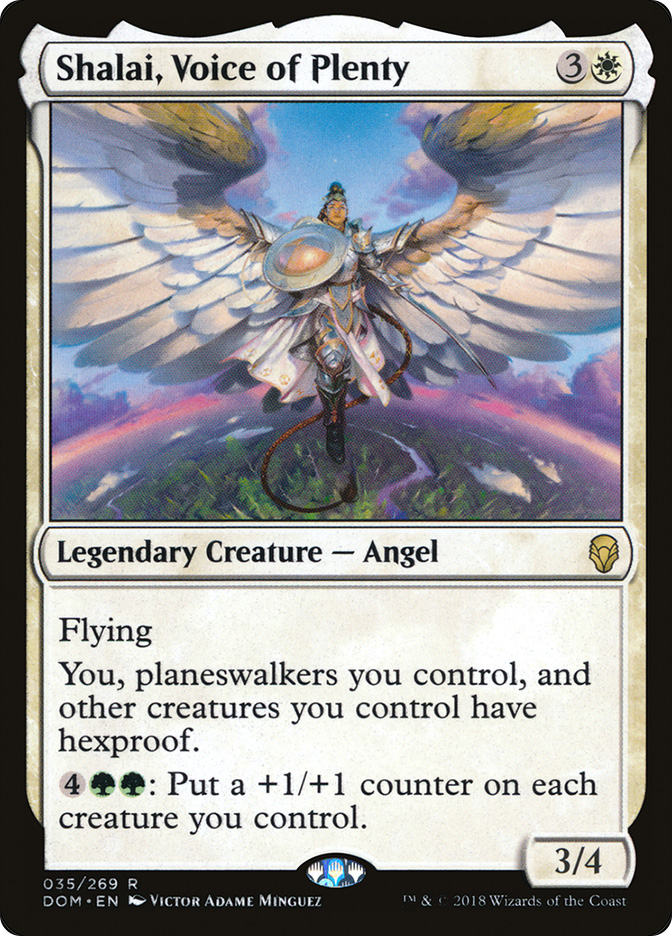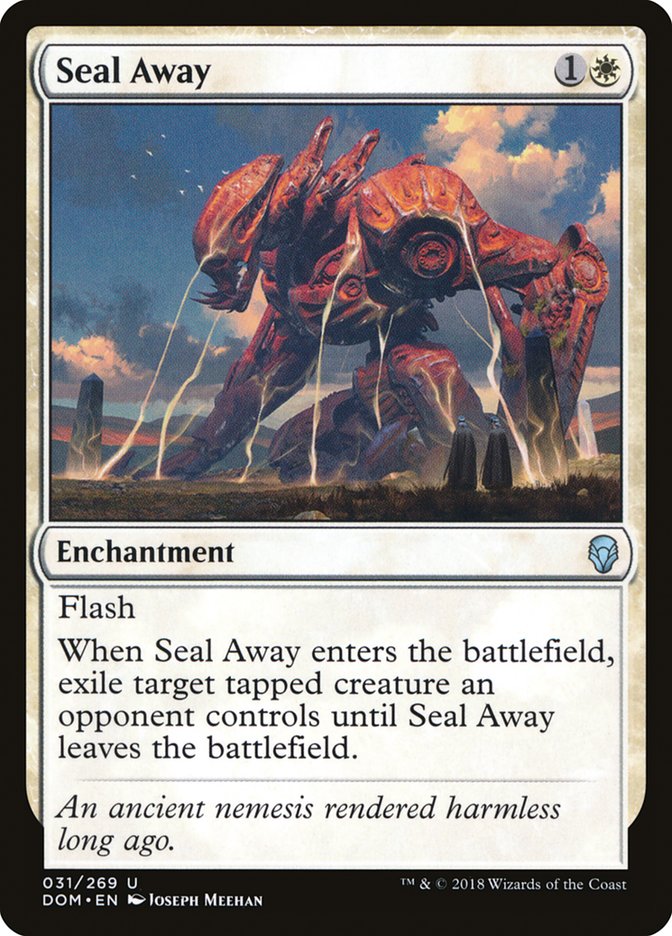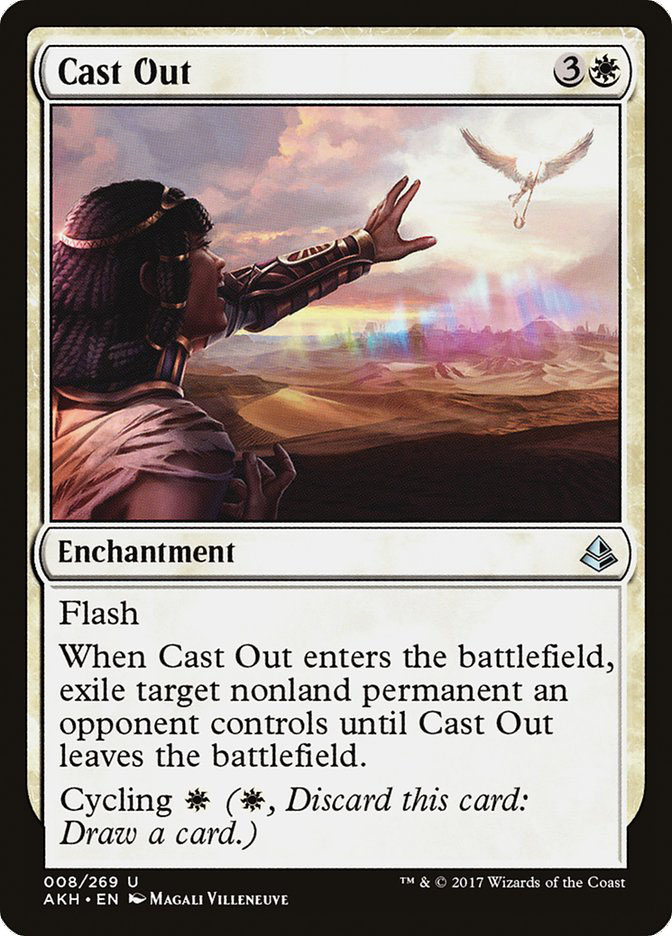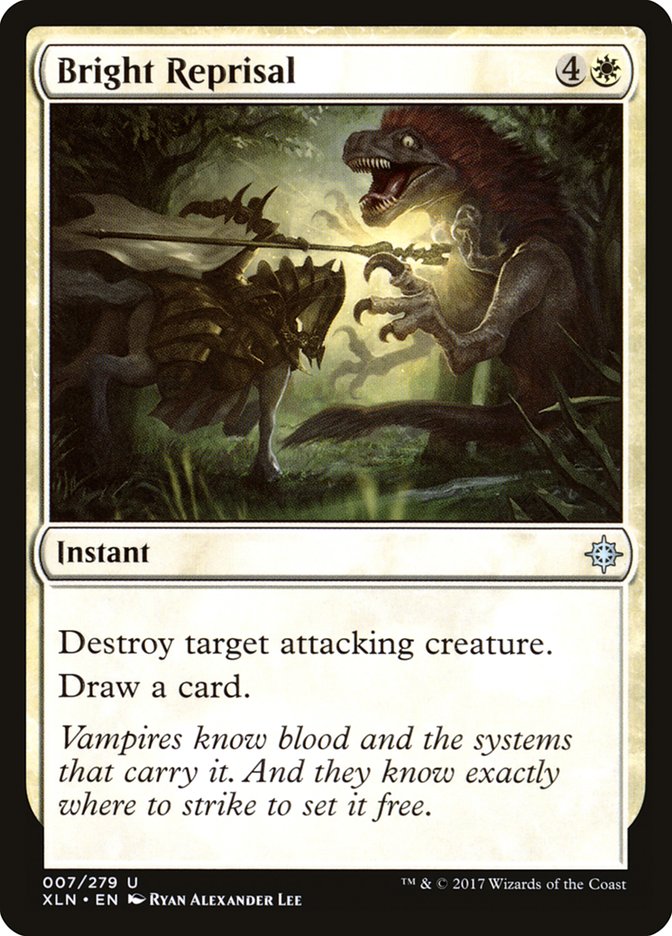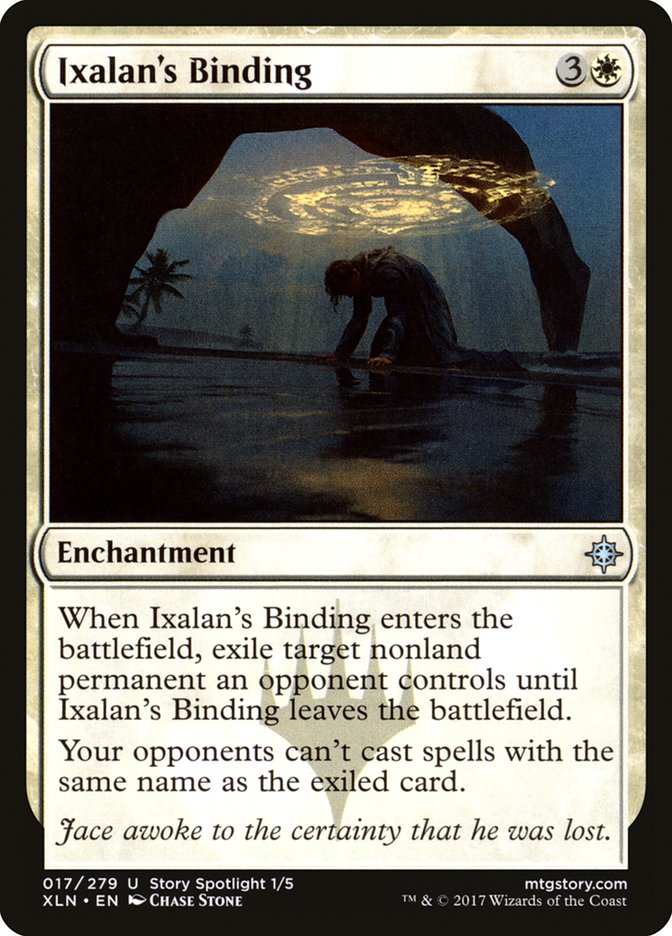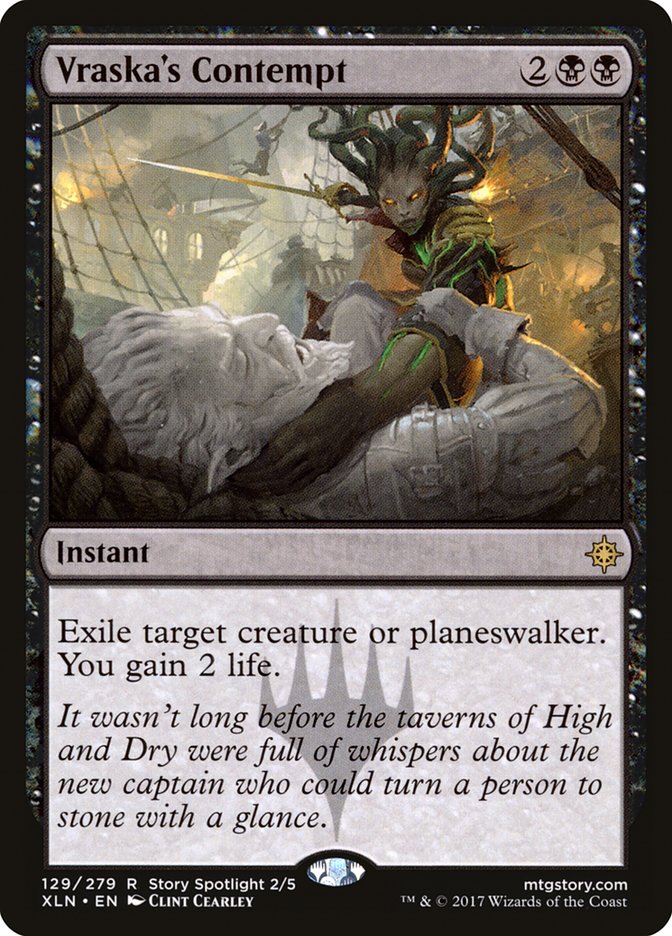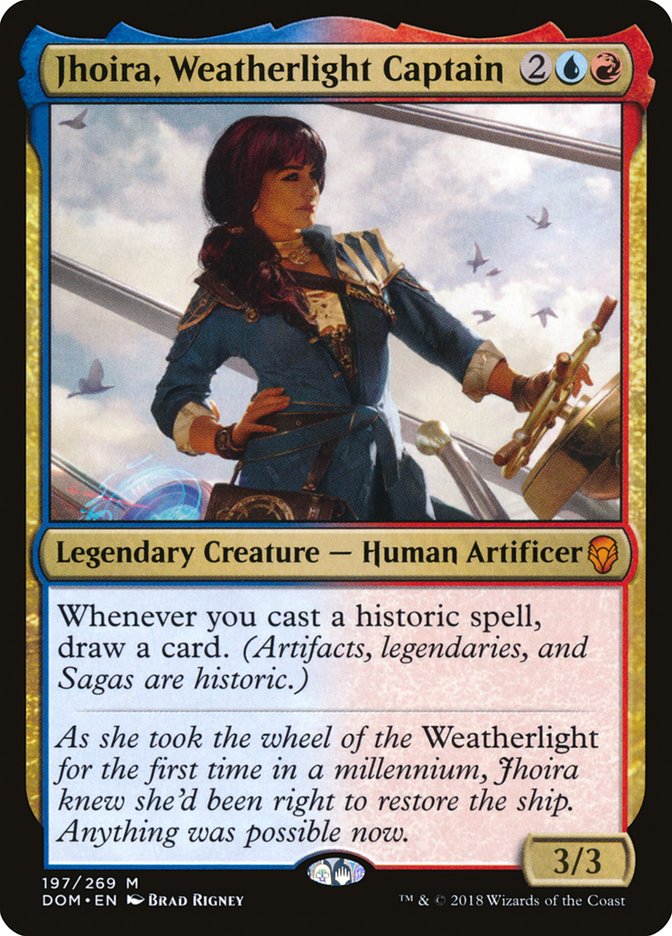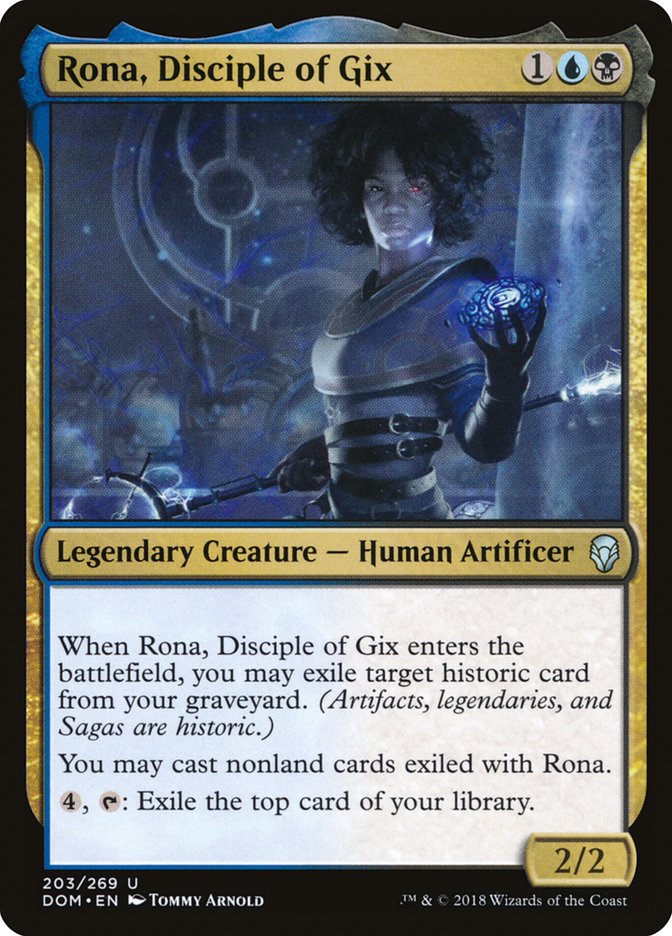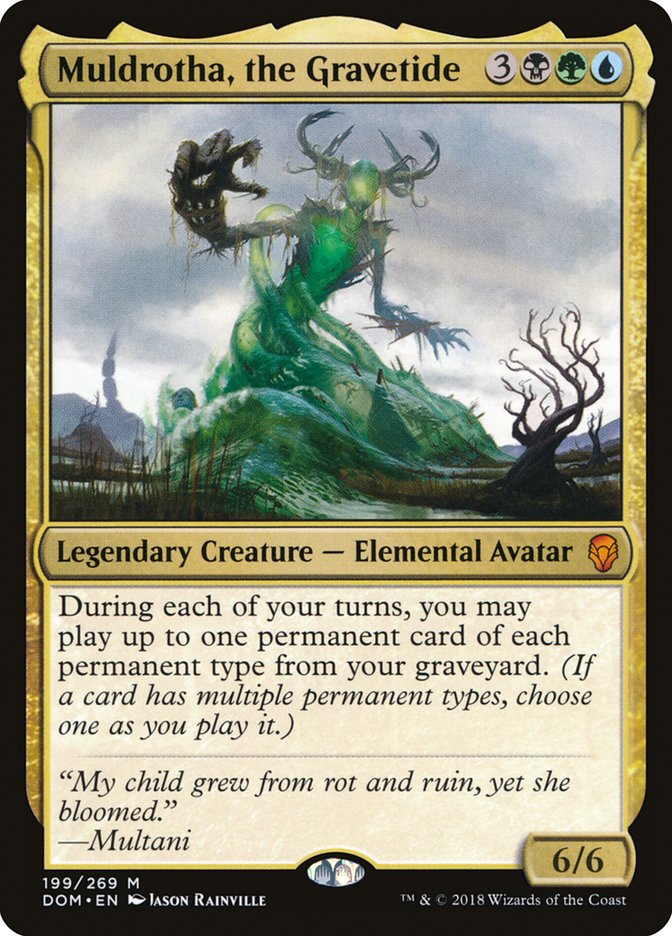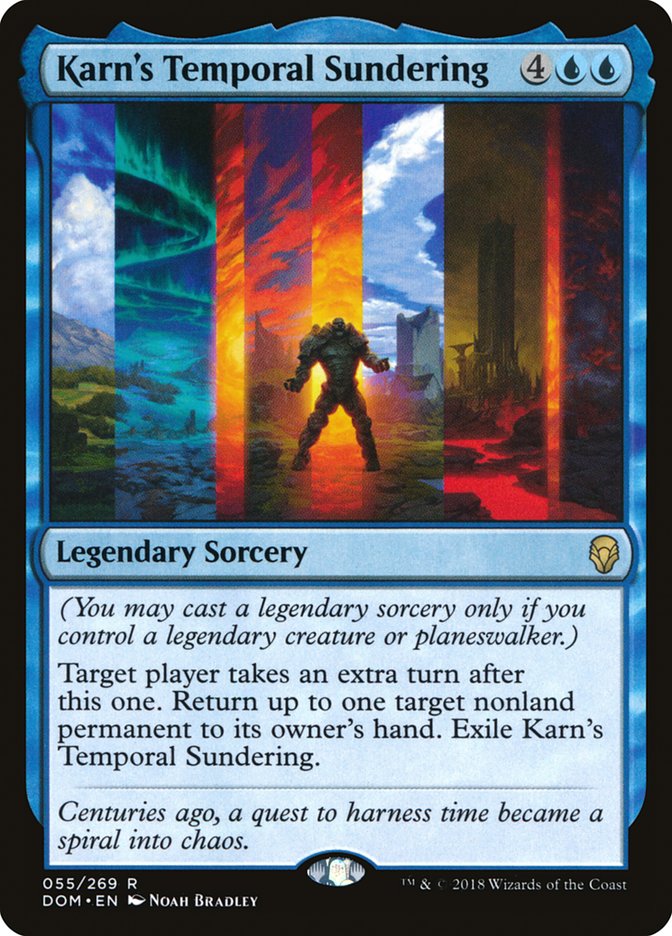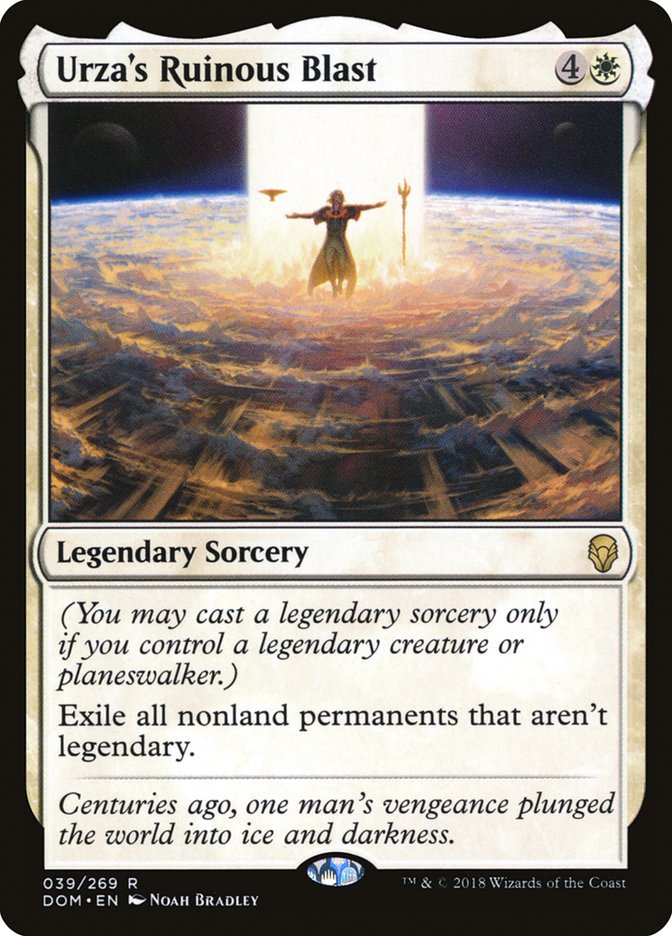We’re right in the middle of Dominaria preview season, and as
awesome as these new cards are, this time period’s still frustrating.
Nothing personal, Dominaria, please don’t get offended. I feel
this way with every set’s previews. If that feeling is heightened this time
around, it’s only because your cards are so amazing that I just can’t wait
to play with them.
Alright, did Dominaria stop listening yet? The problem with
preview seasons is that they raise Magic excitement to a fever pitch while
also greatly lowering the efficiency of time spent on competitive Magic. I
want nothing more than to figure out all these cool new cards, to start
working on understanding the shape of Dominaria Standard. I just
don’t have quite enough information to do that yet.
For one thing, there’s Dominaria cards out there we haven’t even
seen yet. Decks don’t exist in a vacuum; they are consequences of their
environment and without knowing the entire environment it’s very difficult
to predict the strength of a deck. For another, comprehending everything
about a Magic card without playing games with it is quite difficult, and
building a tuned list with new cards you haven’t played with is completely
impossible.
In any case, my solution to this problem is to dive deep into how
individual cards will play out if they end up seeing action during the
upcoming Standard format. I try to focus less on interactions with specific
cards and more on play patterns and interactions with classes of cards: how
the opponent can use their removal to stop this, what timing windows become
critically important, things like that. This emphasis keeps my analysis
relevant when new cards get previewed and even as cards enter and leave the
Standard format with future set releases. This method isn’t a fool-proof
way to get ahead during preview season, but it’s the best I’ve found and
I’ve had
success
with it.
Tempo Jams with Shalai, Voice of Plenty
But enough blathering about the rationale behind this approach. Let’s dive
into some Magic cards.
The interesting thing with Shalai, Voice of Plenty is the generous gift of
hexproof to the rest of your team. There’s plenty of power on the rest of
the card, but it’s not particularly difficult to evaluate. The body of
Restoration Angel has always been impressive, after all, and Shalai has the
same mana cost.
So, let’s hone in on that hexproof clause. Best case scenario, Shalai
functions as an angelic shield for our awesome synergies. I look at Shalai
and I dream of controlling an unkillable Winding Constrictor while having
the mana to activate Shalai’s six-mana ability, which obviously synergizes
with my Snake. Value.
Activating that six-mana ability is a dream-world though, as Shalai is a
lightning rod for removal. After all, your opponent can’t do anything at
all whatsoever with their removal spells besides kill Shalai once she’s on
the battlefield, so expecting her to stick around is quite greedy. She is,
by her very nature, a temporary road block for our opponent. What we need
to figure out is how to maximize the size of that road block.
But let’s back up a second. What are we intending on protecting with our
Shalai? Again, I’m not interested in knowing the exact details here, just
the general idea. My gut says that using Shalai to protect fragile combos
is not a good idea in Standard. We can’t assemble our combo before Shalai
comes down, as that gives our opponent the chance to disrupt one of the
pieces before our shields are up. Nor can we expect to have time to deploy
and make use of our combo pieces in the brief window between casting our
lightning-rod and it catching some lightning.
No, the combos we’re looking to protect are between individual cards and time.
It’s not often you get to untap a Glorybringer that you’ve already exerted
once, and when you do you often get to win the game. Can we utilize Shalai,
Voice of Plenty to make that happen more often? Probably not reliably, but
we can use her to ensure we get that first exerted swing in and
solidly put our opponent on the back foot.
Here’s the thing: Shalai is a tempo nightmare for our opponent if
we jam her when they are tapped out. There’s a lot of threat of activation
style dynamics at play here. We have Shalai and nothing else worth worrying
about, but out opponent must be concerned with our potential
future plays. What if they ignore Shalai and we cast an untouchable copy of
The Scarab God or Glorybringer? They will need to cast two removal spells
to handle that problem, but by then the damage will already be done.
So, let’s assume that our opponent is essentially forced to deal with our
Shalai on sight. This means that we get to constrict their mana on a turn
of our choosing. That can be a powerful tool in our arsenal. What if we
have a bunch of efficient creatures and removal in our Shalai deck and are
excellent at getting ahead early? Then our Shalai becomes a four mana Time
Walk, and we get another turn of attacking with our team while also clearing the way for our Hazoret the Fervent or Glorybringer.
That sounds pretty good.
So, in the end, it looks like I’m advocating for simply playing Shalai in a
classic aggressively slanted midrange deck. To be honest, that makes sense
to me. The card may look like a synergy protector, but it’s going to play
out like a strong tempo card.
Except when it doesn’t. The other thing Shalai does is put your opponent to
the test and potentially snowball the game out of control. You want to know
what happens when you jam Shalai, they don’t kill her, and you follow up
with a powerful, game-ending threat?
The game ends.
For the record, that aside earlier about Shalai protecting Winding
Constrictor was purely a hypothetical. I do not expect those two to be good
together.
But I’ve been wrong before.
Seal Away Stars in the Cheap, Conditional Removal Show
Standard formats are shaped by their removal. I’ve made this point before,
but it’s no accident that every Standard format since the printing of Aether Revolt has revolved around five-drops. The very existence
of Fatal Push pushed five-drops to the top of the heap.
I missed that consequence of Fatal Push during the Aether Revolt
preview season, and I’m still a little upset about it. Had I realized what
Fatal Push would do to the Aether Revolt Standard format, I would
have started playing more five-drops earlier and gained a sizable edge on
the field in the weeks before this became common knowledge. What’s done is
done, but I never want to make that mistake again.
As such, let’s look at the new removal spells entering the fray.
Of the cards previewed thus far, Seal Away and Cast Down are far and away
the best spot removal spells. Notably, they are highly conditional removal
spells that are very efficient at doing what they do. They join Fatal Push
in that role, and I expect both to see a great deal of play throughout
their time in Standard.
The starting point in evaluating conditional removal spells should always
be their restriction. On that note, there’s bad news: Cast Down’s
restriction isn’t terribly interesting. How much play it receives will
depend greatly depend on the shape of the Standard format, the density of
legendary creatures seeing play, and the importance of the common
non-legendary creatures in the format. We’ll figure those things out soon
enough, but for now, Cast Down is somewhat of an unknown quantity. One
thing we can say is that the card merely existing will push the format
towards legendary creatures to some extent, just as Fatal Push pushed the
format towards five-drops. I don’t expect the Cast Down effect to be nearly
as strong, however.
Seal Away’s restriction is a lot more interesting to me. It poses an
interesting dilemma: can our opponents abuse the counter play option the
restriction offers to make our Seal Away significantly worse than its
printed text would indicate?
The potential counter play when facing down Seal Away is simply not
attacking with your creature and instead leaving it untapped when staring
down open Seal Away mana. This forces the Seal Away player to either waste
two mana or use their Seal Away on a lower priority target. We’ve seen this
dynamic before.
On balance, I hate this restriction. It takes a lot before you see me
casting a Divine Verdict in my Limited deck. I just can’t stand giving my
opponent that strong an opportunity to read me like a book and waste my
mana while keeping theirs gainfully employed.
The comparison with Bright Reprisal / Divine Verdict kind of works, but
Seal Away is much better than either of those cards. For starters, it only
costs two mana. Constructed operates on smaller margins than Limited a lot
of the time, but the waste of two mana in Constructed is still a smaller
deal than the waste of four or five in Limited. Even more importantly, you
can Seal Away a creature that attacked you even if you don’t have the mana
up when the attack is declared. In games where mana is going to be tight
you can merely tap out, take a hit from the creature you care about, and
then use Seal Away on it during your main phase.
So, the Seal Away restriction is minor when dealing with creatures you
don’t want to attack you. They can maybe jam your mana up a little and/or
get one good hit in, but you will be able to deal with the threat. Things
get a lot dicier when you need to deal with a creature for reasons other
than combat.
Seal Away will never deal with a copy of The Scarab God when you need it
to. There’s plenty of legends in Dominaria that accrue value over
time, and Seal Away won’t reliably deal with any of them. It’s
exceptionally good at blunting an offense, and rather bad at dealing with
value creatures. Even against offensive creatures, you’re really hoping
they don’t have vigilance, and desperately hoping they don’t control and
refuse to attack with a Shalai, Voice of Plenty.
Right now, there’s a strong message being sent to Standard players: if you
want to kill something of your choosing at a time of your choosing, you’re
going to have to spend four mana.
The unconditional removal spells of this Standard format all cost four
mana, and thus far Dominaria doesn’t look like it’s going to
change that. What does that mean for the format as a whole?
On the Importance of a Stable Dominaria
This last bit is a departure from my general philosophy on approaching
preview season. I have some thoughts on how the format looks like it’s
going to shape up, but these thoughts are untested and could easily be
invalidated by something as simple as the reprinting of Hero’s Downfall.
Take them as you will.
Dominaria
is a set with a lot of cool legendary permanents, and given the whole
removal situation, it looks like those cool legendary permanents are going
to get to stick around on the battlefield often. That’s a very good thing
from the perspective of the legends.
There’s a lot of legendary creatures out there that really like
sticking around on the battlefield. They do cool incidental value things
and the longer they stay on the battlefield the more effective they are. I
mean, that’s true for every card, but especially true for a lot of legends.
The new removal looks set up to help make that a reality.
A reality that might mean a lot to a certain class of new Dominaria cards:
There’s been several historic Standard formats in which I don’t think a
legendary sorcery would have been remotely playable, for the simple reason
that keeping a legend on the battlefield would have been far too much of an
ask. I don’t think Dominaria Standard is going to be one of them.
These legendary sorceries need a certain level of redundancy to be playable
in your deck. A single legend, even if you’re playing four copies of it, is
unlikely to be enough. In a format chock full of cheap removal spells that
can handle the legendary permanents, even nine or ten legends might not be
enough. Dominaria Standard looks like it will offer both plenty of
legends and an environment in which those legends can expect to stick
around for a time, and I think the legendary sorceries will be more
playable than many fear.
The main take-away I’m getting from the removal in Standard is that you can
plan for some of your build around creatures to stick. Not all of them, and
maybe not for as long as you’d like, but long enough to get some value out
of them and pull ahead in the game. It’d be a shame if all the sweet Dominaria legends were unplayable, and I don’t think that’s going
to be the case.
All in all, I’m excited about how Dominaria Standard is looking.
The unconditional removal is expensive, and that means it’ll have to be
used sparingly. The conditional removal is very good at beating aggressive
decks, allowing the format to develop synergy-laden midrange decks that
don’t need to devote all their energy to surviving and can instead do sweet
things, things that look like they might be able to overpower the current
oppressive The Scarab God endgame, though time will have to tell. The
interaction to stop unfair things does exist, but its high mana cost means
tempo plays will punish people who depend on it.
A battleship format where tempo is queen and you have the tools to survive
long enough to play the game you want to play? There’s a lot of Dominaria left to see and tons of it to be explored, but that sure
sounds like Magic I want to play.


